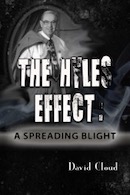866-295-4143, fbns@wayoflife.org
Much of the controversy between evolutionists and creationists concerns the age of the earth and its fossils. Evolution, depending as it does on pure chance, requires an immense amount of time to stumble upon anything remotely approaching the complexity we see in even the simplest living things. For over 200 years, geologists have attempted to devise methods for determining the age of the earth that would be consistent with evolutionary dogma. At the time Darwin's Origin of Species was published [1859], the earth was “scientifically” determined to be 100 million years old. By 1932, it was found to be 1.6 billion years old. In 1947, geologists firmly established that the earth was 3.4 billion years old. Finally, in 1976, they discovered that the earth is “really” 4.6 billion years old. These dates indicate that for 100 years the age of the earth doubled every 20 years. If this trend were to continue, the earth would be 700 thousand-trillion-trillion years old by the year 4000 AD. This “prediction,” however, is based on selected data and certain assumptions that might not be true. As we will see, selected data and unprovable assumptions are a problem with all methods for determining the age of the earth, as well as for dating its fossils and rocks. It has all become something of a “dating game” in which only the evolutionarily-correct are allowed to play.
The most widely-used method for determining the age of fossils is to date them by the “known age” of the rock strata in which they are found. On the other hand, the most widely-used method for determining the age of the rock strata is to date them by the “known age” of the fossils they contain. This is an outrageous case of circular reasoning, and geologists are well aware of the problem. J.E. O'Rourke, for example, concedes: “The intelligent layman has long suspected circular reasoning in the use of rocks to date fossils and fossils to date rocks. The geologist has never bothered to think of a good reply, feeling the explanations are not worth the trouble as long as the work brings results” [American Journal of Science 1976, 276:51]. In this “circular dating” method, all ages are based on evolutionary assumptions about the date and order in which fossilized plants and animals are believed to have evolved.
Most people are surprised to learn that there is, in fact, no way to directly determine the age of any fossil or rock. The so-called “absolute” methods of dating (radiometric methods) actually only measure the present ratios of radioactive isotopes and their decay products in suitable specimens--not their age. These measured ratios are then extrapolated to an “age” determination. This extrapolation is based on the fact that an unstable (radioactive) chemical element, called the parent isotope, breaks down at a presently known rate to form a more stable daughter isotope. In the case of radiocarbon dating, an unstable isotope of carbon (C14) decays to a more stable form of carbon (C12). This currently occurs at a rate which would be expected to reduce the quantity of the parent C14 by half every 5,730 years (the half-life). In other words, the less of the parent isotope (and the more of the daughter isotope) we measure in a specimen, the older we assume it to be.
Radiocarbon dating is actually of little use to evolutionists. There are several reasons for this. First, no rocks and very few fossils contain measurable quantities of carbon measurable quantities of carbon of any kind. Second, because of the short half-life of C14, the radiocarbon method can only date specimens up to about 40,000 years of age. Essentially nothing of evolutionary significance is believed to have occurred in this “short” time frame. The most commonly used radiometric methods for “dating” geological specimens are potassium-argon, uranium-thorium-lead, and strontium-rubidium. All three of these decay processes have half-lives measured in billions of years.
None of these methods can be used on fossils or the sedimentary rock in which fossils are found. All radiometric dating (with the exception of carbon dating) must be done on igneous rocks (rocks solidified from a molten state such as lava). These radiometric “clocks” begin keeping time when the molten rock solidifies. Since fossils are never found in igneous rocks, one can only date lava flows that are occasionally found between layers of sedimentary rock.
The problem with all radiometric “clocks” is that their accuracy critically depends on several starting assumptions which are largely unknowable. To date a specimen by radiometric means, one must first know the starting amount of the parent isotope at the beginning of the specimen's existence. Second, one must be certain that there were no daughter isotopes in the beginning. Third, one must be certain that neither parent nor daughter isotopes have ever been added or removed from the specimen. And fourth, one must be certain that the decay rate of parent isotope to daughter isotope has always been the same. That one or more of these assumptions are often invalid is obvious from the published radiometric “dates” (to say nothing of unpublished dates) found in the literature.
One of the most obvious problems is that several samples from the same location often give widely-divergent ages. Apollo moon samples, for example, were dated by both uranium-thorium-lead and potassium-argon methods, giving results which varied from 2 million to 28 billion years. Lava flows from volcanoes on the north rim of the Grand Canyon (which erupted after its formation) show potassium-argon dates a billion years “older” than the most ancient basement rocks at the bottom of the canyon. Lava flows from underwater volcanoes near Hawaii (that are known to have erupted in 1801 AD) have been “dated” by the potassium-argon method with results varying from 160 million to nearly 3 billion years. No wonder the laboratories that “date” rocks insist on knowing in advance the “evolutionary age” of the strata from which the samples were taken--this way, they know which dates to accept as “reasonable” and which to ignore. Of one thing you may be sure: whenever “absolute” radiometric dates are in substantial disagreement with evolutionary assumptions about the age of associated fossils, the fossils always prevail.
As far as the plausibility of evolution is concerned, it really doesn't make any difference if the earth is 10 billion years old or 10 thousand years old. Indeed, if the whole of evolution were reduced to nothing more than the chance production of a single copy of any one biologically useful protein, there would be insufficient time and material in the known universe to make this even remotely likely. Time by itself simply does not make the hopeless evolutionary scenario of chance and natural selection more reasonable. Imagine if a child were to claim that he alone could build a Boeing 747 airplane from the raw material in 10 seconds, and another were to claim he could do it in 10 days. Would we consider the latter less foolish than the former, simply because he proposed spending nearly a million times more time at the task? Our Creator tells us that “the fool has said in his heart, there is no God.”
- Receive these reports by email
- www.wayoflife.org
______________________
Sharing Policy: Much of our material is available for free, such as the hundreds of articles at the Way of Life web site. Other items we sell to help fund our expensive literature and foreign church planting ministries. Way of Life's content falls into two categories: sharable and non-sharable. Things that we encourage you to share include the audio sermons, O Timothy magazine, FBIS articles, and the free eVideos and free eBooks. You are welcome to make copies of these at your own expense and share them with friends and family. You may also post parts of reports and/or entire reports to websites, blogs, etc as long as you give proper credit (citation). A link to the original report is very much appreciated as the reports are frequently updated and/or expanded. Things we do not want copied and distributed are "Store" items like the Fundamental Baptist Digital Library, print editions of our books, electronic editions of the books that we sell, the videos that we sell, etc. The items have taken years to produce at enormous expense in time and money, and we use the income from sales to help fund the ministry. We trust that your Christian honesty will preserve the integrity of this policy. "For the scripture saith, Thou shalt not muzzle the ox that treadeth out the corn. And, The labourer is worthy of his reward" (1 Timothy 5:18). Questions? support@wayoflife.org
Goal:Distributed by Way of Life Literature Inc., the Fundamental Baptist Information Service is an e-mail posting for Bible-believing Christians. Established in 1974, Way of Life Literature is a fundamental Baptist preaching and publishing ministry based in Bethel Baptist Church, London, Ontario, of which Wilbert Unger is the founding Pastor. Brother Cloud lives in South Asia where he has been a church planting missionary since 1979. Our primary goal with the FBIS is to provide material to assist preachers in the edification and protection of the churches.
Offering: Offerings are welcome if you care to make one. If you have been helped and/or blessed by our material offerings can be mailed or made online with with Visa, Mastercard, Discover, or Paypal. For information see: www.wayoflife.org/about/makeanoffering.html.





